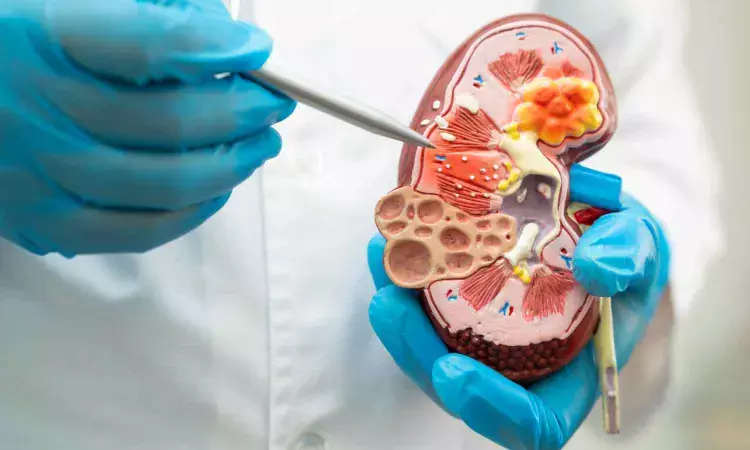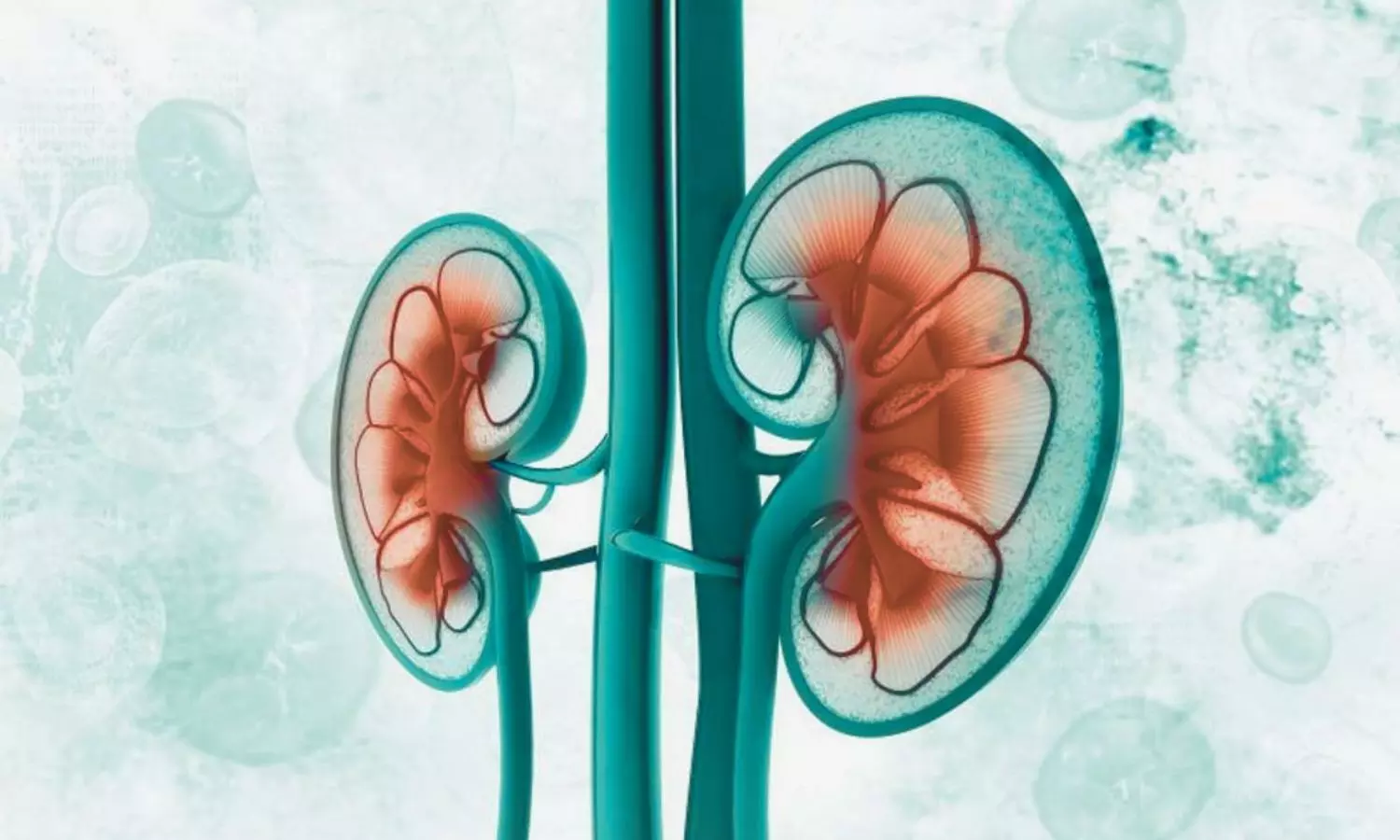- Home
- Medical news & Guidelines
- Anesthesiology
- Cardiology and CTVS
- Critical Care
- Dentistry
- Dermatology
- Diabetes and Endocrinology
- ENT
- Gastroenterology
- Medicine
- Nephrology
- Neurology
- Obstretics-Gynaecology
- Oncology
- Ophthalmology
- Orthopaedics
- Pediatrics-Neonatology
- Psychiatry
- Pulmonology
- Radiology
- Surgery
- Urology
- Laboratory Medicine
- Diet
- Nursing
- Paramedical
- Physiotherapy
- Health news
- Fact Check
- Bone Health Fact Check
- Brain Health Fact Check
- Cancer Related Fact Check
- Child Care Fact Check
- Dental and oral health fact check
- Diabetes and metabolic health fact check
- Diet and Nutrition Fact Check
- Eye and ENT Care Fact Check
- Fitness fact check
- Gut health fact check
- Heart health fact check
- Kidney health fact check
- Medical education fact check
- Men's health fact check
- Respiratory fact check
- Skin and hair care fact check
- Vaccine and Immunization fact check
- Women's health fact check
- AYUSH
- State News
- Andaman and Nicobar Islands
- Andhra Pradesh
- Arunachal Pradesh
- Assam
- Bihar
- Chandigarh
- Chattisgarh
- Dadra and Nagar Haveli
- Daman and Diu
- Delhi
- Goa
- Gujarat
- Haryana
- Himachal Pradesh
- Jammu & Kashmir
- Jharkhand
- Karnataka
- Kerala
- Ladakh
- Lakshadweep
- Madhya Pradesh
- Maharashtra
- Manipur
- Meghalaya
- Mizoram
- Nagaland
- Odisha
- Puducherry
- Punjab
- Rajasthan
- Sikkim
- Tamil Nadu
- Telangana
- Tripura
- Uttar Pradesh
- Uttrakhand
- West Bengal
- Medical Education
- Industry
Platelet Distribution Width Difference as Biomarker for Acute Kidney Injury in Cardiac Surgery: Study

A groundbreaking study revealed that platelet distribution width (PDW) could be used as a useful non-invasive biomarker for acute kidney injury (AKI) following cardiac surgery. An increase in the PDW was associated with an increase in the risk of AKI as per the study published in the BMC Nephrology.
AKI is a common and severe clinical condition that occurs after cardiac surgery with an increased risk of morbidity and mortality. It is caused due to multiple reasons and is more frequently seen in individuals with preexisting kidney disease. PDW is a marker for platelet activation and is a biomarker used for platelet size variability. Previous research shows that platelet distribution width (PDW) can potentially predict AKI due to its links with inflammatory and cardiovascular conditions. Cardiac surgery can influence PDW due to changes in hemodynamics, the onset of inflammation, and the need for blood transfusion. Elevated PDW has been linked to renal injury due to chronic kidney disease. As there is ambiguity on PDW’s role in predicting AKI after cardiac surgery, researchers conducted a study to investigate the potential role of PDW as a predictive marker for AKI in cardiac surgery patients.
A retrospective study was carried out by including adult cardiac surgery patients with preoperative renal dysfunction (eGFR between 15 and 60 ml/min/1.73m²). Necessary clinical data was collected from electronic medical records including cardiac function metrics, surgery details, and postoperative outcomes. The Kidney Disease: Improving Global Outcomes (KDIGO) guidelines were used to assess the AKI and daily serum creatinine measurements were used to monitor postoperative renal function. PDW was measured preoperatively and immediately after postoperatively and the difference (dPDW) between the two was calculated. Multivariable logistic regression models assessed the association between dPDW and AKI, with adjustments for confounders. Subgroup analyses were also done to verify consistency across groups.
Findings:
- AKI occurred in 53.10% (513/966) of patients, and all the patients showed a significant increase in PDW (P < 0.001).
- After adjusting confounders, dPDW was identified as a significant risk factor for AKI.
- When compared to the patients in the lowest quartile, those in the highest dPDW quartile (Q4) had a 195% higher AKI risk.
- Trend analysis showed an increase in the risk of AKI with higher dPDW quartiles (P for trend < 0.001).
- Youden index showed that dRDW = 1.1 was identified as the optimal diagnostic cut-off value for AKI.
- Subgroup analyses and interaction tests showed a robust association between dPDW and AKI in all subgroups (P for interaction > 0.05).
Thus, the study concluded that PDW can be used as a potential biomarker for AKI risk in cardiac patients. Monitoring the difference in PDW helps in the early identification and timely management of individuals with an increased risk for AKI. Further research can be done to use this PDW measurement in clinical practice for timely intervention.
Further reading: Su, Y., Xu, X., Luo, Z. et al. Association between perioperative platelet distribution width changes and postoperative acute kidney injury in patients with renal insufficiency: a retrospective study. BMC Nephrol 25, 393 (2024). https://doi.org/10.1186/s12882-024-03802-9
BDS, MDS
Dr.Niharika Harsha B (BDS,MDS) completed her BDS from Govt Dental College, Hyderabad and MDS from Dr.NTR University of health sciences(Now Kaloji Rao University). She has 4 years of private dental practice and worked for 2 years as Consultant Oral Radiologist at a Dental Imaging Centre in Hyderabad. She worked as Research Assistant and scientific writer in the development of Oral Anti cancer screening device with her seniors. She has a deep intriguing wish in writing highly engaging, captivating and informative medical content for a wider audience. She can be contacted at editorial@medicaldialogues.in.
Dr Kamal Kant Kohli-MBBS, DTCD- a chest specialist with more than 30 years of practice and a flair for writing clinical articles, Dr Kamal Kant Kohli joined Medical Dialogues as a Chief Editor of Medical News. Besides writing articles, as an editor, he proofreads and verifies all the medical content published on Medical Dialogues including those coming from journals, studies,medical conferences,guidelines etc. Email: drkohli@medicaldialogues.in. Contact no. 011-43720751




